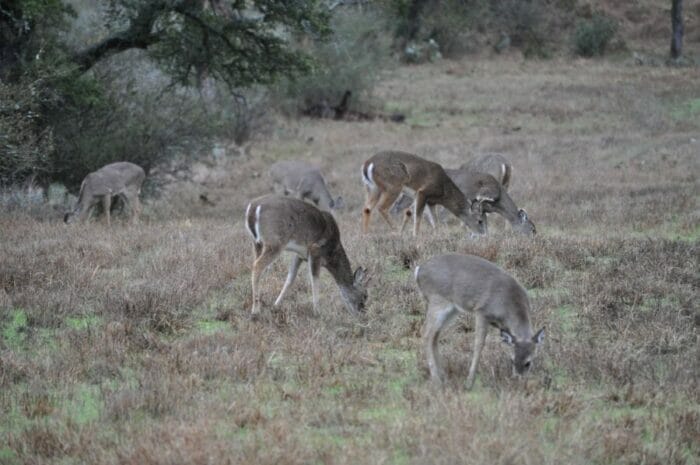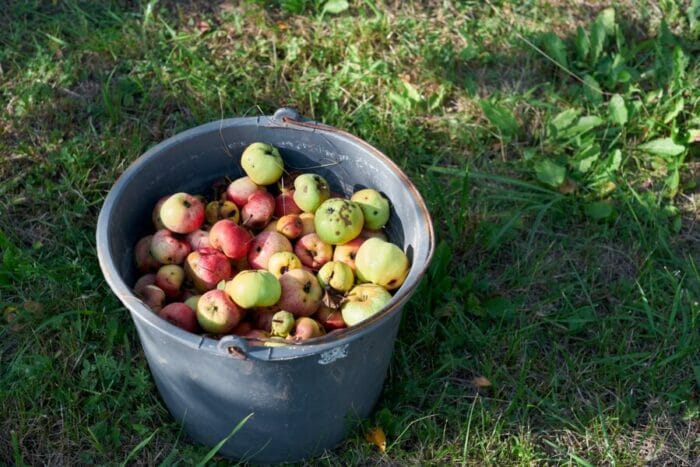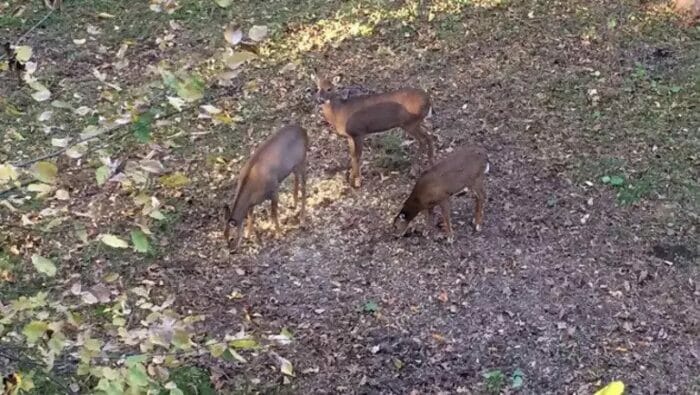Pros and Cons of Using Deer Corn
There was a time when the most-discussed question around a hunting campfire was, “Is the .270 or .30-06 The Better Deer Round?” I suspect the topic is still bantered around but now includes mention of many other subjects. More recent and far-expanded “campfire” discussions happening now on internet forums and other social media revolve around baiting or not baiting for deer and whether corn should be used as bait.
I find it interesting as a lifelong hunter, professional wildlife biologist, outdoor writer, podcaster, tv show host, and speaker who frequents numerous hunting camps. There is seldom any neutral ground for using corn as bait. People are either “furrrit or aggginnit.”
Corn, specifically “shelled corn” as opposed to corn still on the cob, has long been used as bait to pull deer out of thick brush and lure them to where they are more readily visible. Most corn used as deer bait comes out of a sack sold at convenience, sporting goods, grocery, or feed stores. We, too, now have “deer corn,” denoting corn explicitly marketed for deer. I have seen guys refuse to buy regular shell corn because it was not specified as “deer corn.” Talk about excellent marketing! There is no science behind “deer corn.” We also now have apple-flavored and probably other fruit-flavored corn, truly interesting and creative marketing.
The History of Using Corn as Deer Bait
Before discussing the pros and cons of using corn as bait, let us return to those thrilling days of yesteryear, back to the 1950s and early 1960s, before people started baiting with corn or apples in areas where deer had not previously experienced either.
Back then, where corn was not part of the locally farmed row crops, deer had no idea what corn was. When corn was first put out as bait, deer either avoided the area or paid no attention, at least not until it sprouted and started growing. Then they ate it for the foliage. It took quite some time to get deer interested in eating corn where it did not previously exist. Same with apples. Fifty years earlier, every article about whitetail hunting, particularly in the northern climes, suggested finding an apple orchard and hunting there because deer loved apples.
But what of regions where there were no apple trees? Several years ago, hunting mule deer in the Hondo Valley of New Mexico, a friend decided to buy a pick-up bed full of apples. Said he, “I’m going to have every deer on the ranch at my stand this year!” He hauled the apples back to our South Texas lease and dropped them in a pile a hundred yards from his deer stand. Soon as he did, deer avoided the area as if they were scared to death of apples. The pile of apples finally “melted.” Occasionally, before they did, you could see where deer walked by but shied from them. Even less occasionally, you could see where a deer leaned into the pile to smell of the apples but never took a bite.
Deer are finicky eaters, particularly if they have never before experienced a new item. And, they seldom eat too much of any one thing unless that is all that is available.
These days, outside of some of the wilderness areas and states where baiting is verboten, most whitetail deer know what corn is. Once they have tasted it, they like it!
Scientific Research on Using Corn as Bait for Deer
Is there any good in feeding corn or using it as bait? I suppose it depends on who you ask. Scientific research conducted by Dr. David Hewitt with the Caesar Kleberg Wildlife Research Foundation at Texas A&M University suggests some corn in a deer’s diet can be beneficial. Corn usually contains around 9% protein. It is high in starch which provides energy and is beneficial to deer. Corn generally also contains 4% fat. According to Dr. Hewitt, high starch and fat are likely the primary reasons deer eat it and like it, especially where energy is lacking in their diet.
Corn is often a primary ingredient in pelleted rations designed for deer. Years ago, when some friends and I owned Los Cazadores Hunting Headquarters in Pearsall, Texas, we worked closely with Texas A&M University Kingsville and ADM, which owns Moorman Mineral, in doing deer nutritional research. Working with nutritionists from TAMU and ADM, we learned a lot about deer nutrition and the deer’s rumen system. The primary things we learned included:
*Energy is essential for a deer’s health and antler development, likely as important as protein.
*Consistency in a deer’s diet is critical. Each time something drastically changes in a deer’s diet, the rumen’s “flora” (bacteria, protozoa, and fungi) which breaks down what deer eat, has to change. This change creates a nutritional setback.
*We do not feed deer; we feed the deer’s rumen’s flora, be it with bait, a ration, or natural browse. Changes to a deer’s diet need to be gradual for the general health of the deer.
*Too much corn in a deer’s diet can impede the absorption of some proteins and can cause rumen acidosis, which can be fatal to deer.
*Trace minerals play an important role in a deer’s health.
*If corn (bait) plays a major role in a deer’s diet, it should be fed year around.
Considering these factors, corn is best used as bait, particularly if distributed in small amounts rather than creating a 24/7 corn pile. Small amounts of corn, such as what is thrown from an automatic feeder or distributed by hand, can actually be beneficial to deer in terms of augmenting energy.
Baiting with corn sometimes works in attracting mature bucks, but mostly it works for does, fawns, and younger bucks that “come to corn.” Older bucks may generally do so under cover of darkness. However, as the rut approaches, bucks tend to show up where there are does. If bucks come to corn, it gives the hunter time to evaluate them relative to age and antler development.
On many properties, the harvest of does is extremely important. Baiting certainly helps attracts does and assists in assuring a sufficient number are harvested.
Thus the positive side of baiting with corn include:
*Corn can provide some protein but, more importantly, serves as an energy source.
*Corn aids in giving time to evaluate deer relative to age and antlers and in the ease of harvesting a sufficient number of does.
The Negative Side to Baiting Deer with Corn
There are negatives to baiting with corn as well. If a deer eats a considerable amount of corn, it can prevent some proteins from being absorbed. Rarely, if a deer overeats corn (due to a lack of anything else to eat, which is highly uncommon), it can cause rumen acidosis and kill the deer. Remember, deer are finicky eaters! They like variety in their diet. But deer are individuals no less than you and me. Occasionally an individual will get hooked on a bait pile and overeat. But the chance of this happening is rare.
Rumen acidosis happens when carbohydrate digesting bacteria, ordinarily low in a deer’s rumen, overwhelm the other rumen flora and produce a large amount of lactic acid. When this happens, fluids move into the rumen and are trapped there, causing dehydration. When that rumen fluid high in lactic acid is absorbed into the bloodstream, it can rise to potentially fatal levels. The high acid content in the rumen can also cause ulcers in the rumen wall.
Baiting with corn, especially from a throw-type feeder, tends to congregate deer in an area. There they feed on the same ground every time the corn is dispersed. If there are internal parasites or ectoparasites, those problems can be compounded. With the presence of Chronic Wasting Disease in some areas, it brings deer together more frequently in close proximity to each other and could cause the malady to spread.
Corn sold as “deer bait” can sometimes be infected by alfa toxins produced by the fungus Aspergillus flavus. This fungus can cause death, particularly in birds. Most places that sell corn for deer bait these days require “deer corn” to be checked for alfa toxin before they sell it. When buying corn, I ask the dealer, “Has your corn been checked for alfa toxin? Is it alfa toxin free?” If the answer is “No!” I go elsewhere.
Consider these things if you are baiting with or thinking about baiting with corn.
In Summary
The reality of using corn as bait is that it can provide needed energy in a deer’s diet if done properly and not in excess. If done in excess, it can cause problems. But again, realize deer very seldom overeat any one food item unless it is all they have available, so a problem with rumen acidosis rarely happens.
As a wildlife biologist, I suggest if using corn as bait, it’s best scattered by hand. If you use a throw feeder, move the feeder every month or so at least far enough so you are not throwing corn where it fell previously. On properties I hunt, we broadcast corn by hand on the ground, then slightly move locations every three or four days. If you want to feed corn as a supplement, there are numerous other “grains” that are better in terms of nutritional quality. Remember consistency in a deer’s diet and gradual changes maintain the rumen’s flora and keep it happy. And if the deer’s rumen is happy, the deer is happy!
Professional wildlife biologist/outdoor communicator, Larry Weishuhn, known to many as “Mr. Whitetail”, has established quality wildlife management programs on over 12,000,000 acres throughout North American and other parts of the world. He has hunted big game with rifle and/or handgun on six continents. Larry is a Professional Member of the Boone & Crockett Club, life-member of numerous wildlife conservation organizations including the Dallas Safari Club, Mule Deer Foundation, and Wild Sheep Foundation. He currently serves on the DSC Foundation Board of Directors, is one of three co-founders of the Texas Wildlife Association; is a member of the Legends of the Outdoors Hall of Fame and the Muy Grande Hall of Fame; he too, received the Zeiss Lifetime Achievement Award among many other honors.




